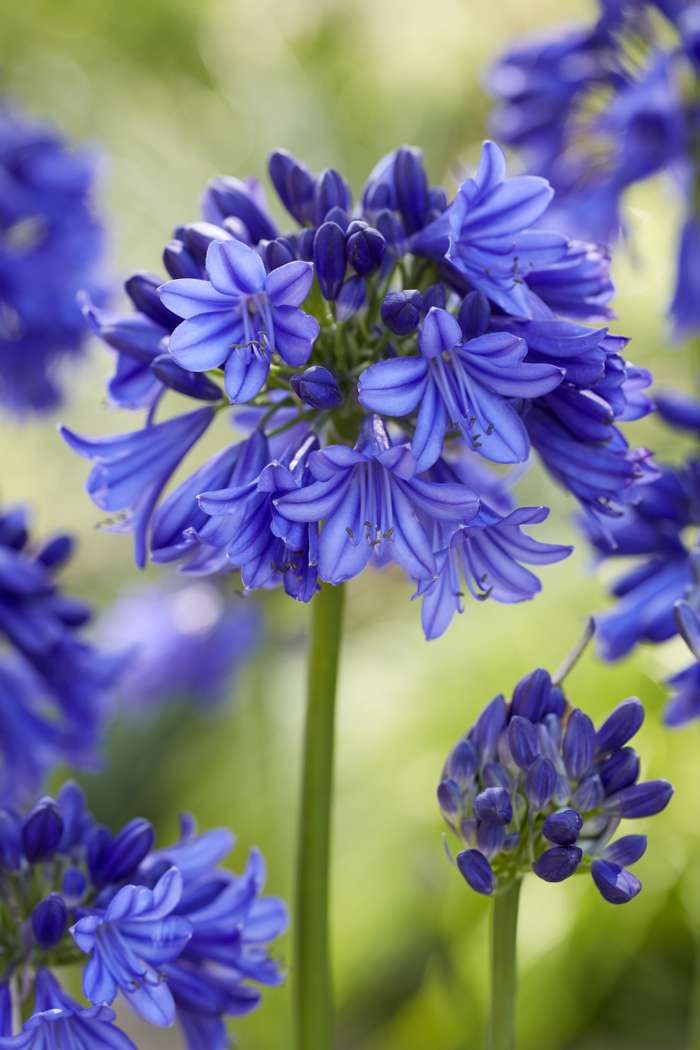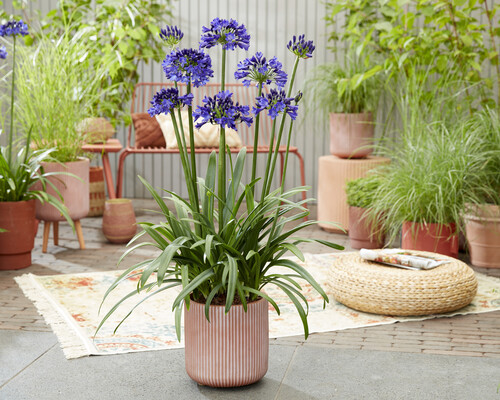Releasing the Secret to Successful Agapanthus Farming: Idea for a Flourishing Yard
In the world of gardening, growing agapanthus successfully calls for a tactical approach that incorporates numerous facets of plant treatment. With mindful interest to detail, one can unlock the keys to nurturing these sensational flowers, bring about a garden that thrives with charm and vibrancy. By comprehending the nuances of agapanthus farming, one can develop an atmosphere where these plants flourish and flower abundantly. In the following conversation, we will discover necessary suggestions and tricks that will certainly direct you in the direction of a thriving agapanthus yard, offering understandings into finest techniques, dirt conditions, sprinkling strategies, and much more.
Growing Agapanthus: Ideal Practices
When growing Agapanthus, proper dirt prep work is essential for guaranteeing successful development and development of these beautiful blossoms. Agapanthus, typically called Lily of the Nile or African lily, grows in well-draining soil with a slightly acidic to neutral pH level - Agapanthus. Before planting, it is important to amend heavy clay dirts with raw material such as garden compost or peat moss to improve drainage and provide essential nutrients for the plants
To plant Agapanthus, pick an area that obtains complete sunlight to partial shade, as this will advertise healthy and balanced growth and plentiful flowering. Dig an opening twice the diameter of the plant's root ball and position the Agapanthus at the same deepness it was previously expanding. Delicately backfill the hole with soil, pushing down firmly to get rid of any air pockets around the roots.
Water the recently grown Agapanthus extensively and remain to keep the soil equally wet, particularly during the plant's energetic expanding period. Agapanthus. Using a well balanced fertilizer once a month can even more support the plant's development and blooming. By following these finest practices for planting Agapanthus, you can develop a stunning display of these fascinating flowers in your garden
Ideal Dirt Issues for Agapanthus
For optimal development and growing success of Agapanthus plants, guaranteeing the soil problems are perfect is essential. Agapanthus prefers dirt that is rich in nutrients, so including a balanced fertilizer during the growing period can promote healthy development and dynamic blossoms.

Watering and Fertilizing Tips
To make sure healthy and balanced development and lively flowers, proper watering and fertilizing techniques are necessary for effective Agapanthus farming. Agapanthus plants gain from normal watering, particularly throughout the expanding period. It is advised to water deeply once a week, making sure the dirt is wet however not soaked. During heat or in pots, even more regular watering may be needed to avoid the soil from drying totally.
When it pertains to fertilizing Agapanthus, a balanced plant food with equal components nitrogen, phosphorus, and potassium can be applied in the spring to promote healthy and balanced growth and flowering. Slow-release plant foods are ideal for giving nutrients progressively over an extensive period. Avoid over-fertilizing, as this can bring about too much vegetation development at the cost of blooms.
Additionally, including raw material like garden compost into the soil can boost nutrient degrees and enhance soil framework, aiding in the general health of the Agapanthus plants. By adhering to these watering and fertilizing pointers, gardeners can ensure their Agapanthus plants grow and create spectacular displays of flowers.
Trimming and Deadheading Methods
Appropriate trimming and deadheading methods play a critical role in maintaining the health and wellness and looks of Agapanthus plants, matching the important techniques of watering and feeding for successful farming. Pruning Agapanthus involves removing spent blossom heads, yellowing or dead leaves, and total shaping of the plant to promote much better growth. Deadheading, the process of removing faded blossoms, not just improves the plant's look but likewise urges additional flowering.
When deadheading Agapanthus, it is suggested to snip off the blossom stem at the base using sharp, tidy shears. This process redirects the plant's energy from seed manufacturing back into root and vegetation development, advertising a healthier and a lot more robust plant. Normal deadheading can expand the you could look here flowering duration of Agapanthus and avoid self-seeding, which can lead to overcrowding.
In terms of trimming, Agapanthus generally gain from a light trim after flowering to clean up the plant and urge fresh growth. Cutting back the spent flower stems and removing any kind of damaged or dead vegetation aids maintain the plant's vitality and general look. Nonetheless, it is necessary to stay clear of cutting into the crown of the plant, as this can deteriorate its health.

Protecting Agapanthus From Pests and Diseases
Carrying out effective bug and illness management methods is vital to guarding the wellness and vigor of Agapanthus plants in cultivation. One usual parasite that impacts Agapanthus is the Agapanthus borer, a caterpillar that tunnels right into the plant, creating damage to the leaves and flowers.
In addition to parasites, Agapanthus are vulnerable to illness such as root rot and fungal fallen leave areas. By staying watchful and dealing with bug and disease problems quickly, garden enthusiasts can aid their Agapanthus flourish and grow.

Verdict
In final thought, successful cultivation of agapanthus calls for proper planting methods, optimal soil problems, ample watering and feeding, regular trimming and deadheading, and defense from conditions and parasites. By complying with these suggestions and techniques, home gardeners can make certain a prospering yard full of lovely agapanthus blooms. Agapanthus. Bear in mind to preserve constant treatment and attention to information to advertise the health and longevity of these sensational plants
When planting Agapanthus, correct soil preparation is necessary for making certain successful development and growth of these lovely blossoms.Water the newly grown Agapanthus thoroughly and continue to keep the dirt equally moist, particularly throughout the plant's energetic growing season.For optimum growth and blooming success of Agapanthus plants, making certain the dirt conditions are suitable is important. When planting or hair transplanting his explanation Agapanthus, make sure the dirt is well-prepared to supply the essential foundation for the plants to establish themselves successfully. One usual pest that influences Agapanthus is the Agapanthus borer, a caterpillar that passages right into the plant, triggering damage to the blossoms and leaves.